Special reports
Inside Queen Bee’s murky Zimbabwean mining hive
Published
4 years agoon
By
VicFallsLive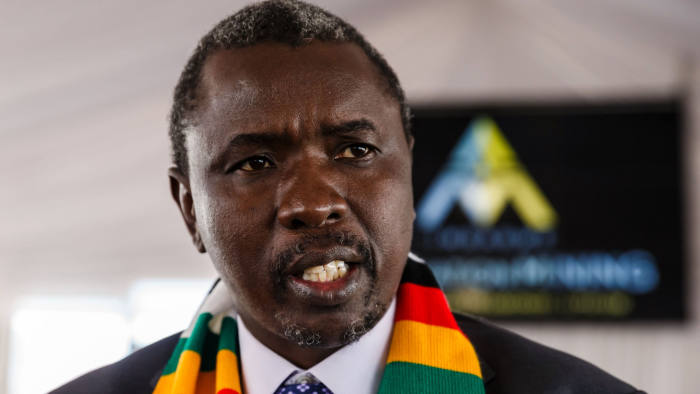
BY JOSEPH COTTERIL
In Zimbabwe’s Shona language, ‘kuvimba’ can mean trust or having faith.
It is a great name for a state-owned custodian charged with protecting the impoverished southern African nation’s mineral wealth, riches that have otherwise so often been abused, corrupted and looted over the decades.
Or it would be a great name, if it wasn’t for the fact that ever since Kuvimba Mining House was unveiled last year, President Emmerson Mnangagwa’s government has faced difficult questions about how far the company, in which it holds a 65% stake, is linked to a US-sanctioned businessman: Kudakwashe Tagwirei.
Both the government and Kuvimba have denied that Tagwirei — a former local business partner of Trafigura who has been dubbed ‘Queen Bee’ by Zimbabweans because of his perceived grip on the dispensing of state resources under Mnangagwa — has any involvement at the company.
Tagwirei has been publicly silent on these allegations and did not respond to a request for comment on this story.
Queen Bee actually is a great name — in another sense.
As Alphaville reported recently, Tagwirei controlled a veritable hive of offshore companies that moved millions of dollars through a central Mauritian commodity trader, Sotic International.
And what has made the questions about Kuvimba particularly difficult is that its assets — which include stakes in nickel, chrome, and gold producers, as well as a platinum deposit — come from Sotic, which embarked on a mine-buying spree in recent years.
For instance, Bindura Nickel, a Sotic-acquired miner that is now in Kuvimba’s portfolio, announced in a stock-exchange filing last year that Sotic had “nominated Kuvimba… as the entity receiving the shares” following Sotic’s own takeover in 2019.
Kuvimba has said that it acquired Sotic assets in a “restructuring exercise”, without giving details.
One big question, then, is how Kuvimba came to own Sotic’s assets. And, while Zimbabwe’s government denies allying with Tagwirei in Kuvimba, its ties to Sotic have also been less clear. Or until now, that is.
Zimbabwe’s most valuable company?
Christopher Fourie, a former Tagwirei aide and Sotic’s founder, who still holds a stake in the company, has told Alphaville that he did not consent to Sotic’s mine assets being moved to Kuvimba.
Meanwhile, according to message records reviewed by Alphaville, Zimbabwe’s government has been intimately involved in Sotic’s affairs all along.
In these messages Tagwirei described the government as a majority owner of the company, despite official shareholder records pointing to the contrary, and ordered Fourie to deal with senior state officials when he voiced concerns about the alleged siphoning of Sotic’s resources to other offshore companies.
Zimbabwe’s finance ministry has been instrumental in promoting Kuvimba, where the state’s overall two-thirds stake is held by public bodies such as a nascent sovereign wealth fund and the country’s insurance and pensions commission, which has said that it will use its five per cent shareholding to compensate pensioners who lost out in a currency collapse.
Mthuli Ncube, the Finance minister, has even said that Kuvimba will help fund a compensation deal for farmers who were dispossessed by seizures of land under Robert Mugabe, the late dictator deposed in a 2017 coup.
Kuvimba paid a US$1 million dividend for this purpose in July, though that month the government also said that this farmer compensation fund had received a donation of a 12.5 % stake in the company itself, which it said was worth US$250 million.
Even in paper terms, that is a lot of money in the context of Zimbabwe, an economy that had a GDP of about US$16 billion last year.
The valuation would imply that Kuvimba overall is worth US$2 billion, making it Zimbabwe’s most valuable company, beyond the country’s biggest stock-market listings such as Econet, the largest telecom.
It would also rival public market values of even some big South African miners, such as Harmony Gold.
Tagwirei does not own a single share of this bonanza, says David Brown, the former chief executive of Kuvimba, who was also Sotic’s chief executive but has denied taking directions from Tagwirei at that company.
In June, when he still headed Kuvimba, Brown told Alphaville that:
He (Tagwirei) certainly does not own a shareholding in the mining assets as we stand today… with regard to the shareholding position we have performed a detailed KYC [‘know your customer’] and I stand by what I have been able to verify with documents.
Brown has since told Alphaville that he left Kuvimba at the end of August.
As previously reported by Alphaville, not owning a single share of Sotic didn’t appear to prevent Tagwirei controlling that company, even when Fourie was its original official sole owner.
Fourie has said that Tagwirei was not made a direct shareholder in Sotic because he believed this would have triggered KYC alarms at banks that might have cut the company off over the businessman’s political links.
A subsequent — and elaborate — split in Sotic’s official ownership last year is meanwhile crucial to the Kuvimba mystery today, particularly Fourie’s claim that Sotic’s mines were transferred without proper approval.
A Mauritian connection
As Alphaville reported last time, 65% of Sotic was acquired by a Cayman Islands-registered investment vehicle, Almas Global Opportunities Fund, in which Tagwirei acquired shares in 2019.
Almas has said that Tagwirei doesn’t own shares in the fund any more, and that it is exiting its investment in Zimbabwe.
The other third of Sotic was acquired by Pfimbi, a Mauritian company in which Fourie took a 22% stake, alongside stakes held by other executives who were close to Tagwirei.
Pfimbi is yet another great name — it has connotations of ‘secret’ or ‘safekeeping’ in Shona.
According to shareholder records, some shares in Pfimbi were also taken up by Simbarashe Chinyemba, who has been linked to Kuvimba. Chinyemba did not respond to a request for comment.
Keeping up?
Good.
More recently, Pfimbi’s status in Mauritius has been in question after its local company agent, Capital Horizons, told shareholders earlier this year that it would cut ties.
But Pfimbi and Sotic being based in Mauritius is important for how their assets were moved to Kuvimba.
Mauritian company law requires pre-emption rights to be given to existing shareholders over changes in ownership of assets – terms reflected in Sotic’s company constitution, which has been reviewed by Alphaville.
Despite this, Fourie has said that he was never asked to approve any transactions relating to Kuvimba, and has not received answers from the company or other shareholders.
Fourie told us: If [there have been] any changes to these shareholdings and/or ownership in assets has changed, it was done without the consent of all shareholders, and mine in particular.
Ronelle Sinclair, Christian Weber, and Jozef Behr, South African executives who were Fourie’s fellow shareholders in Pfimbi and who had close ties to Tagwirei, said in response that they had “resigned from all duties including from the board of Sotic International” in June 2020.
“Since then, [Sinclair, Weber and Behr] have had no insight into the affairs and business of Sotic International, Christopher Fourie, or Kudakwashe Tagwirei,” the trio added. Chinyemba, as another Pfimbi shareholder, did not respond to a request for comment. Almas, Sotic’s other investor, declined to comment. Brown, the former Kuvimba chief executive, said that Chinyemba was involved in setting up the transactions with a Zimbabwean legal team.
“My only comment is that Mr Fourie should decide if he was a beneficial or nominee shareholder,” he added.
Fourie said he was a beneficial shareholder.
“The shares were held in my personal capacity . . . there never was any nominee shareholder agreement in place,” he said.
The Zimbabwean Finance ministry did not respond to a request for comment, including to see copies of relevant shareholder approvals for transfers of ownership or management from Sotic to Kuvimba.
So, even though a US$2 billion valuation is riding on the answer, the mystery remains over whether proper shareholder approvals back Kuvimba as the legitimate successor to Sotic’s mines.
That, of course, is based on the official Sotic shareholdings described so far. It is about to get weirder.
“I am just a minority shareholder” According to WhatsApp messages reviewed by Alphaville, in May last year, Tagwirei told Fourie that “Sotic is owned by government 65 percent and myself 35 per cent,” despite official records that show Almas and Pfimbi owned the company in these proportions.
“I am just a minority shareholder… you will best speak to the [main shareholder] who contracted you,” said Tagwirei in one of the messages.
Tagwirei did not respond to a request for comment.
Fourie told Alphaville that it was his understanding at the time that the 65% stake was a proxy for the Zimbabwean government.
Almas told Alphaville that “it is simply incorrect and not factual” that the Zimbabwean government had a majority stake, or Tagwirei a minority stake, in Sotic.
The Zimbabwean Finance ministry did not respond to a request for comment on whether the government held an undisclosed proxy stake.
Message records reviewed by Alphaville show that Fourie was indeed speaking to a senior state official about Sotic, as Tagwirei suggested.
The top civil servant in the finance ministry met Fourie to discuss Tagwirei’s offshore interests, and warned him not to make threats about exposing those involved, according to these messages.
After a “screaming match” early last year, “Kuda informed me that I needed to go see George Guvamatanga,” the ministry’s permanent secretary, Fourie told Alphaville.
Guvamatanga and the finance ministry did not respond to requests for comment.
According to WhatsApp messages, Tagwirei instructed Fourie to meet Guvamatanga and Sibusiso Moyo, Zimbabwe’s Foreign minister at the time and a former army general who was instrumental in the 2017 coup against Robert Mugabe.
Moyo died from Covid-19 earlier this year.
“If it does not work then we go higher,” Tagwirei said in the messages.
He did not respond to a request for comment about the messages, including on who was being referred to as going higher.
Fourie told Alphaville that he met Guvamatanga at his ministry office and “most definitely and in the strongest possible way” pressed his complaints about Sotic and other companies.
The two kept up communications thereafter, after Kuvimba had been established, according to the message records.
“Kuda is currently incapacitated… happy to talk to you though,” Guvamatanga, a former chief executive of the former unit of Barclays in Zimbabwe, told Fourie in messages which date from a period earlier this year when Tagwirei was not seen in public for some time.
“I can assist on this matter but not when you are threatening everyone like this,” he said.
“You need to focus on what you personally want to get out from all this. Everything else will not help you.”
“In the absence of KT I have been speaking to Obey on your matter,” Guvamatanga said in another message, in an apparent reference to Obey Chimuka, an associate of Tagwirei who owned a group of companies that traded with Sotic.
Chimuka did not respond to a request for comment.
“To enable me to push for a solution may you send me a summary of what you would regard as a full and final settlement claim.
“It is in our interest to have this matter urgently resolved amicably,” Guvamatanga added.
Fourie sent Guvamatanga a proposed deal to sell his shares in Pfimbi to Tagwirei, according to records.
Tagwirei did not respond to a request for comment.
The deal was never implemented.
Many questions — about the Zimbabwean government’s true relationship with Sotic, and the legitimacy of its mining successor, Kuvimba — remain unanswered.
Fourie told Alphaville that Guvamatanga and Tagwirei “appeared to be very close and I would classify them as personal friends.”
Guvamatanga did not respond to a request for comment.
Meeting the civil servant to discuss Tagwirei’s business affairs was “probably not appropriate,” Fourie said.
But, he added, “it is the only way business is done in Zim.”- Financial Times
You may like
Slider
From skins to steaks — How wildlife trade is fueling communities in South Africa
Published
6 days agoon
December 11, 2025By
VicFallsLive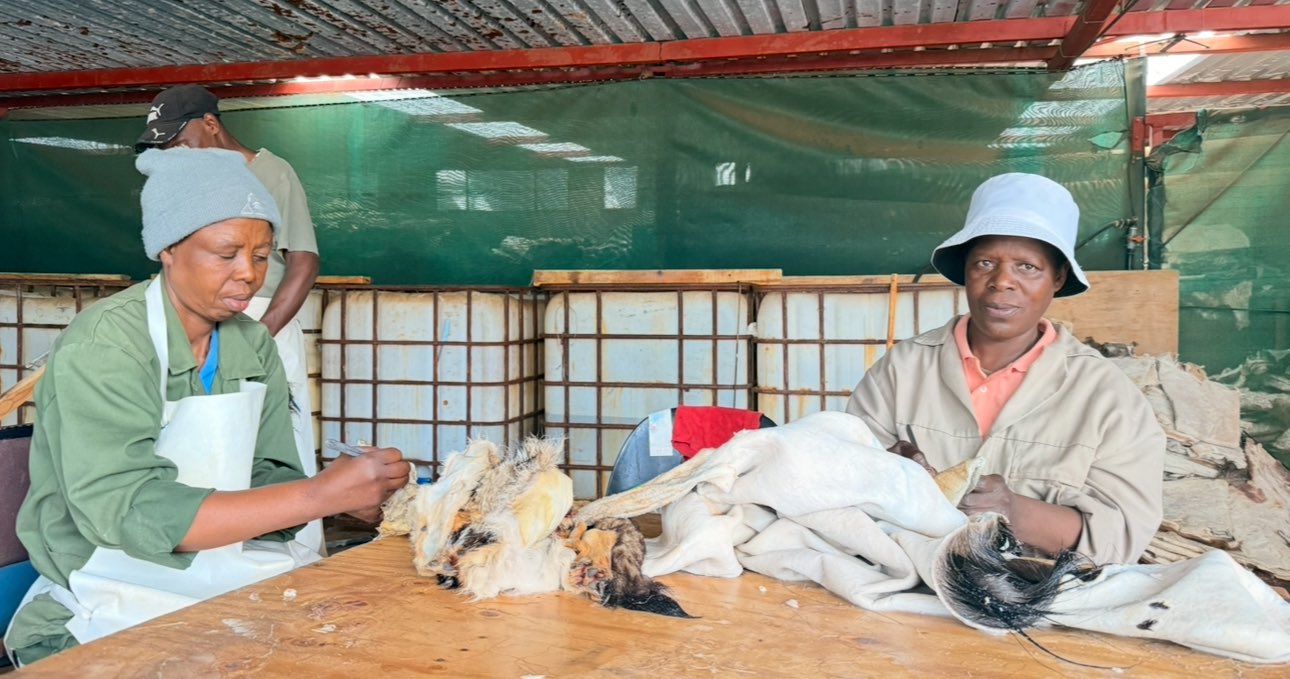
BY NOKUTHABA DLAMINI
In the small town of Bela-Bela, a quietly flourishing business is unfolding — one that turns wildlife into livelihood, education, and economic opportunity. On a humid afternoon, we walked into the operations of Estelle Nel Taxidermy (and its parent networks), where rows of beautiful animal mounts — from antelope horns to zebra skins, skulls to full-body trophies — line the walls.
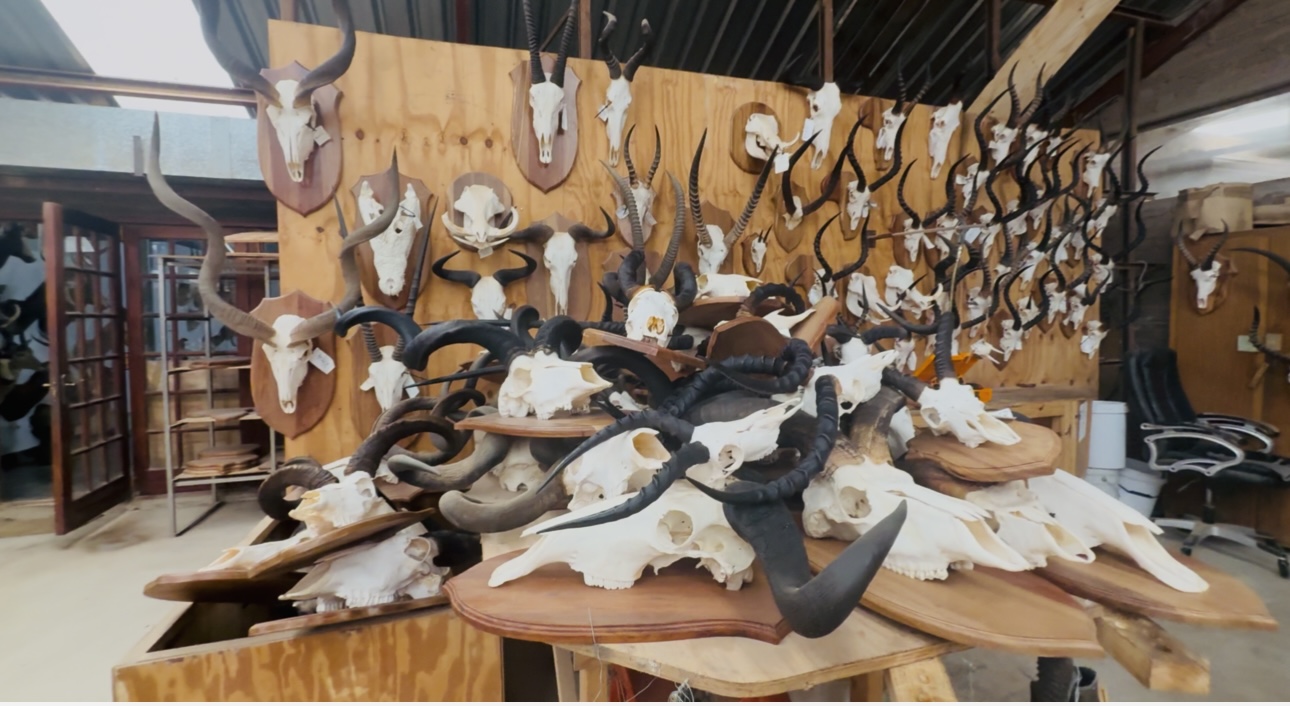
But beyond the busts and custom mounts lies a deeper purpose: this is not simply a display of hunting trophies. It is a system of sustainable use — where animals that die naturally or are hunted legally are completely utilised: meat, skin, horns, bones — nothing goes to waste, and everything acquires value.
As we discovered from our conversations, this network extends beyond taxidermy. Adjacent to the showrooms are processing facilities, butcheries, and game-meat wholesalers — all integral to transforming South Africa’s wild fauna into a formal, regulated, and sustainable economy.
“This is home” — an artisan’s vocation
I sat down with Melanie Viljoen, who serves as Export Secretary at Estelle Nel Taxidermy. Her voice was calm, resolute.
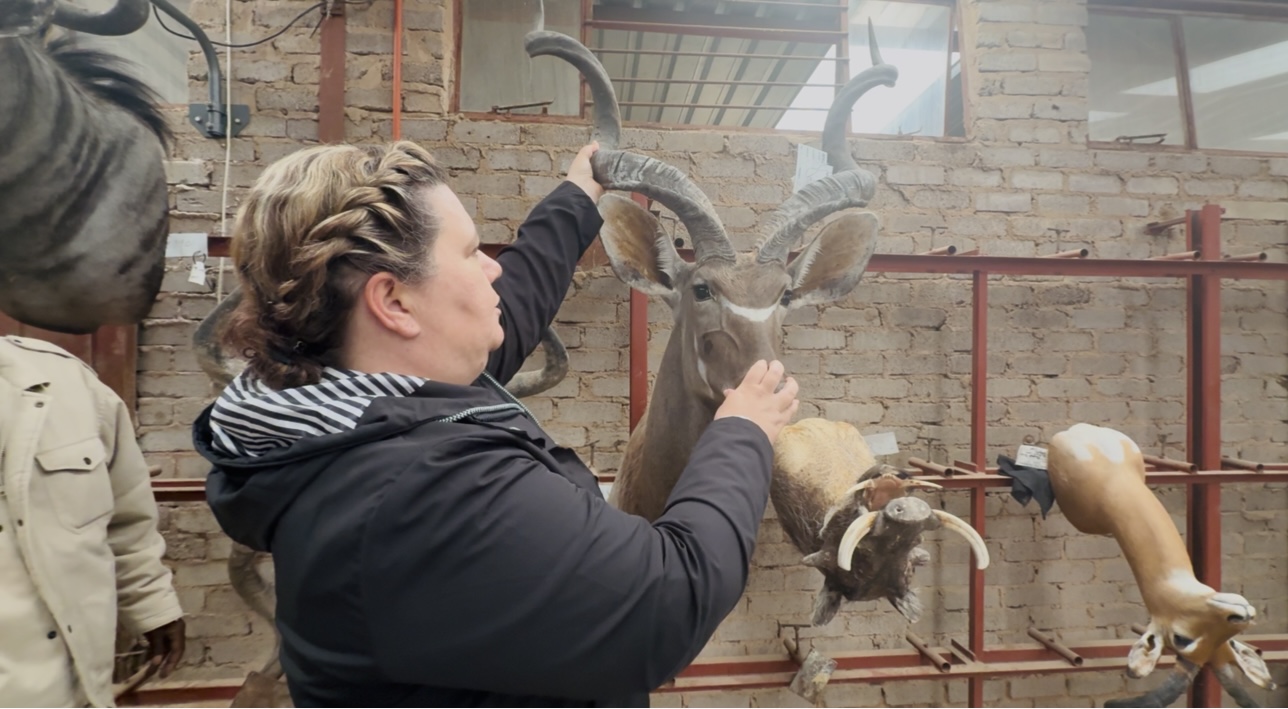
“For me, it’s like this is home and it’s something that I love to do. I love art. I studied art at school. I can’t think of anything else I’d rather do.”
She told us she’s been with the business for thirteen to fourteen years. Over that time she’s mastered a unique craft. “I’ve found my niche,” she said, “and I’m not going anywhere.”
Melanie explained how the business flows: outfitters bring in international clients to hunt on private farms, then process the animals: trophy mounts for some, meat for others. Locals also bring animals — sometimes for trophies, sometimes just for meat. There is even “school-mount” work: smaller species, sometimes a mother and its young, carefully preserved — not just for hunters, but for children to touch and learn about wildlife up close.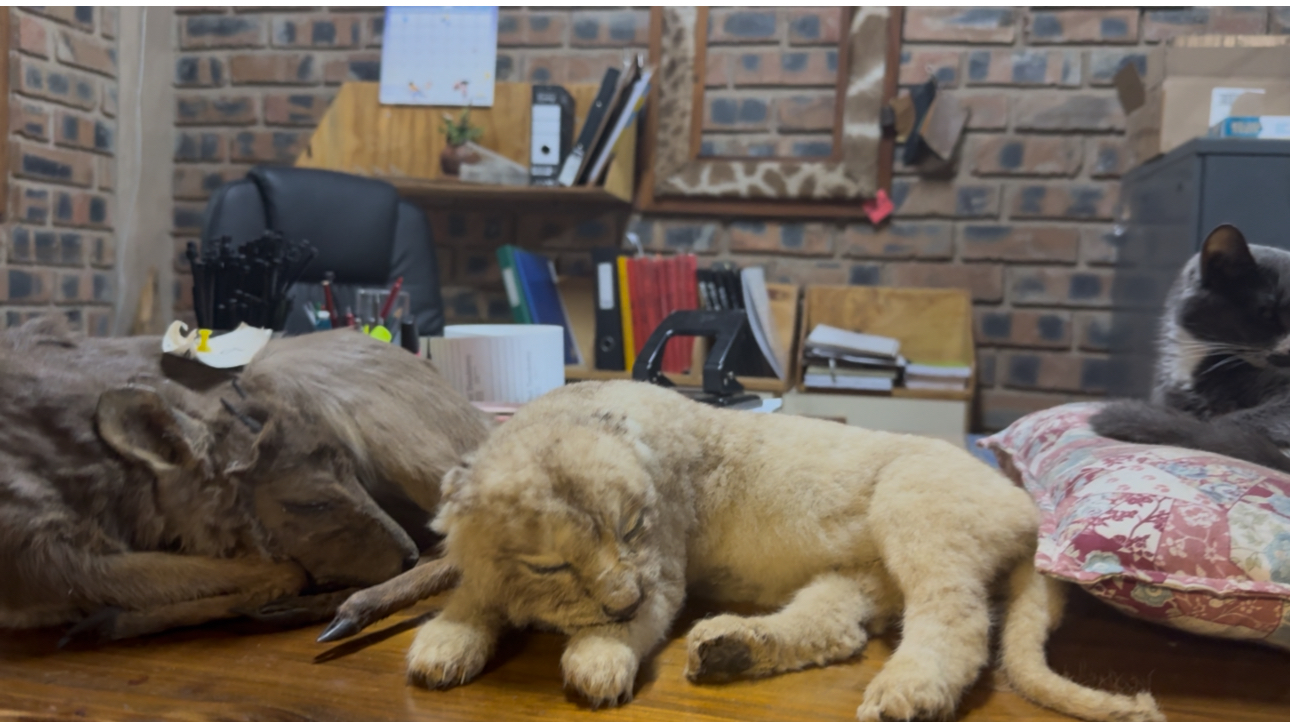
“We mount animals that have died naturally or were hunted… we use everything, from the meat to the skins and curls. It’s a sustainable way of doing business, and everything has a monetary value.”

This, she says, is both business and passion — blending artistry, conservation, and commerce.
From workshops to global markets — taxidermy meets commerce
According to membership details o South African Taxidermy & Tannery Association, Estelle Nel Taxidermy offers a wide range of services: from mounting mammals, birds, reptiles; tanning skins and capes; cleaning, mounting and articulating skulls, bones, horns, tusks; to producing novelty leather items, polished horn décor, engraved bones, hoof lamps — even gunbags and furniture. They offer full export packing and crating services, and help clients ship internationally.
What this means is that skins, hides and trophies — once the culmination of a hunt — become far more than personal souvenirs. They become export commodities, contributing to livelihoods of artisans, packers, shippers, and everyone in between.
Yet, as Pieter Swart President of South African Taxidermy & Tannery Association (SATTA)/chairman of SUCO-SA) told us, that path to global markets is not without obstacles.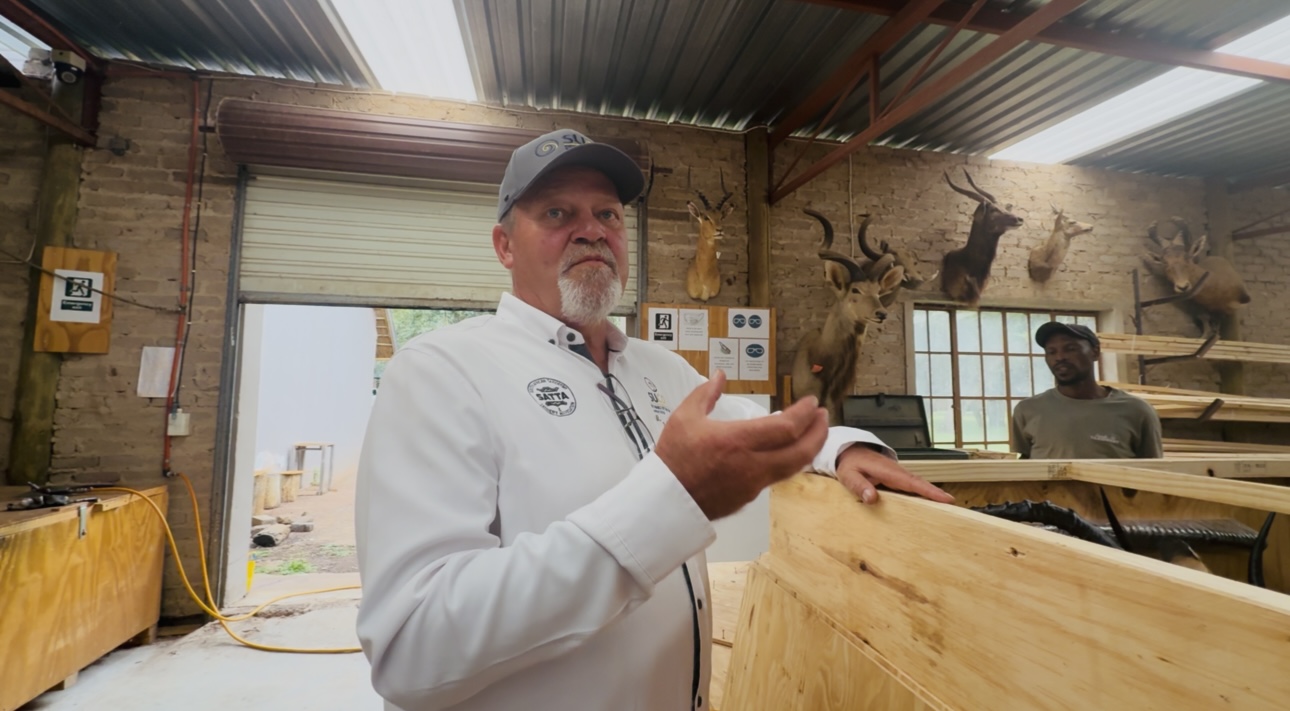
“Certain airlines allow the shipping of these trophies. I think it’s about four airlines that you can ship them overseas, but the rest refuse to take their hunting trophies to destinations. As well as the sea shipments — there’s only one ship going to America every three months. The rest of the shipping lines refuse to take hunting trophies.”
He lamented the difficulty in logistics. And yet, he sees themselves as part of a broader — and misunderstood — effort. “This anti-animal works movement created the idea that hunting is killing the animals and destroying them to extinction — but that is actually quite the opposite,” he said. “More and more, the guys are farming the animals; that is creating a better future for the animals.”
In other words: regulated, sustainable use — of every part of the animal — can coexist with conservation, economic empowerment, and community upliftment.
Next door to the taxidermy showroom, we toured a modest but hygienic meat-processing Camo Meat facility, run by people like Ina Hechter. They explained that their business started small — in 2012 as a private processing butcher for animals from farms. Around 2017 they expanded into wholesale for local markets. Export remains limited, but local demand is growing.
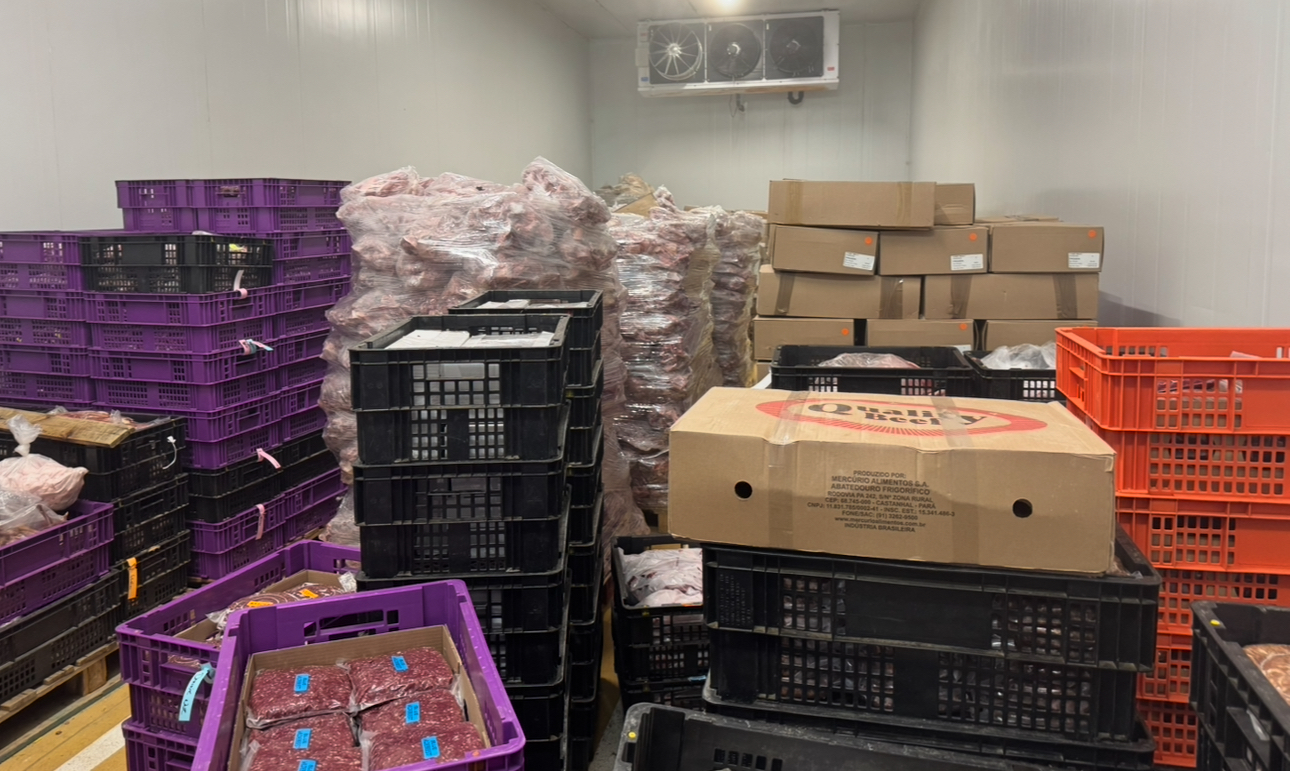
Their meats include species typical of the South African game-meat industry: kudu, impala, springbok, wildebeest, zebra and others. What began as a niche — somewhat stigmatised — trade is slowly gaining acceptance. Some supermarkets and lodges are carrying game meat; more restaurants are offering “veld flavour.”
Ina told me that in times of drought — when traditional livestock farming may suffer — game-meat businesses often see increased activity. Farms with overstocked wildlife or animals unable to survive drought may harvest and sell meat, skins and other resources. In this way, what might have been a loss can become income, conservation, and food security.
“Our parks are so small that they can’t sustain all the animals that are there,” Ina said. “Especially in drought years … when it’s not raining a lot you will see they die and then they sell the animals.”M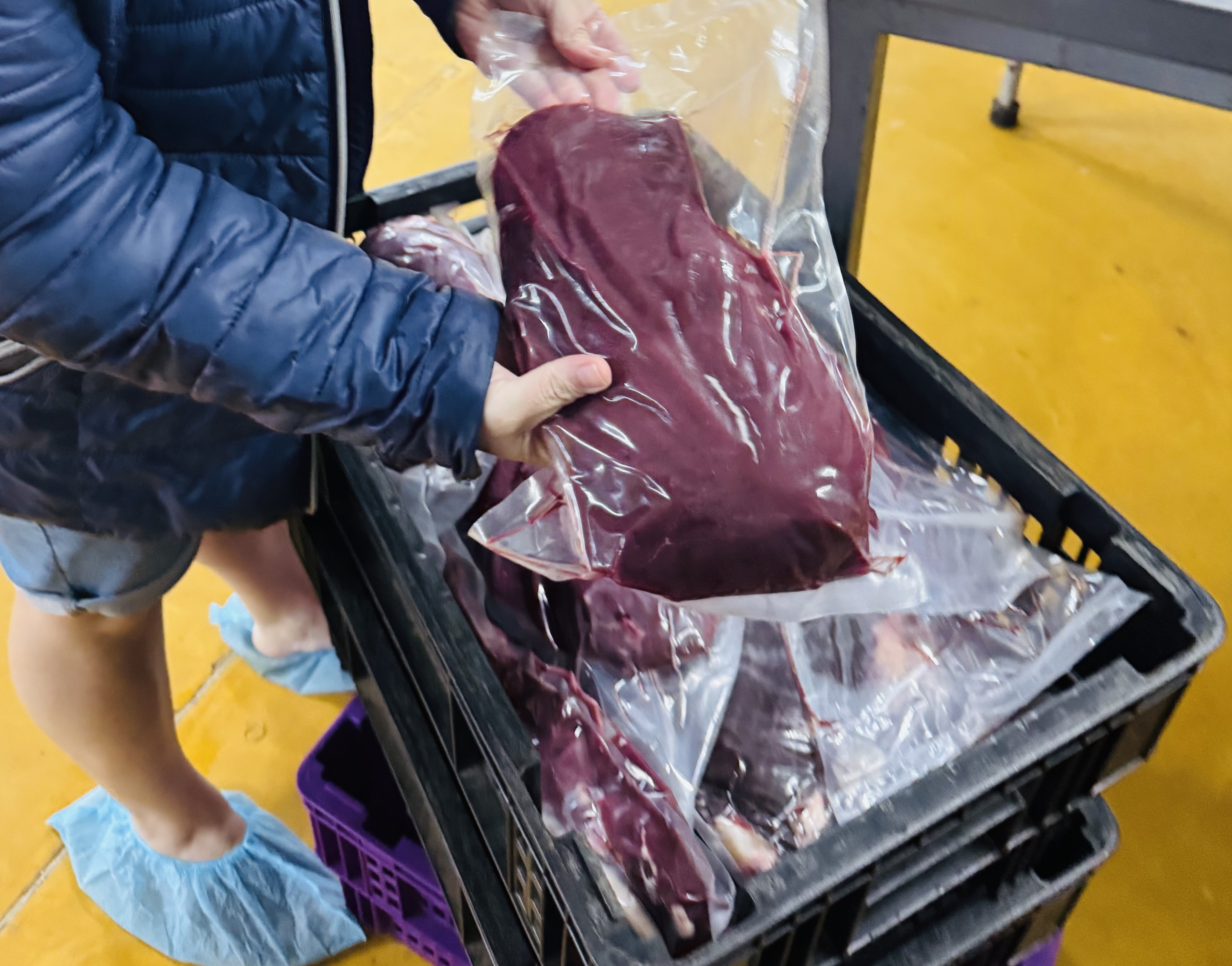
She sees game meat not only as a business, but as part of a broader sustainable economy — offering healthy, lean protein to consumers, easing pressure on overburdened habitats, and circulating value in rural and peri-urban communities.
More than meat and trophies — a conservation-economy model
What struck me during the tour was how holistic the operation is. It isn’t just about hunters bringing back trophies. It’s about using every bit of what exists: meat, skins, hides, horns, bones — even skulls, and decorative by-products. From full-body mounts to polished horn décor, from retail game-meat packages to furniture made from hoofs: this is a full-value chain.
Companies like Estelle Nel Taxidermy are members of formal trade associations and provide professional services — tanning, mounting, packing, export documentation — and in doing so, they help formalize trade in wildlife products.
Meanwhile, the game meat industry — though historically informal — is slowly growing more regulated. According to a recent national biodiversity-economy strategy, game-meat production supports economic growth, food security, and employment. The most commonly produced and consumed species: impala, kudu, wildebeest, springbok.
In other words: when properly managed, this sector has the potential to transform perceptions of wildlife — from being simply “wild animals” to resources that can feed, employ and uplift entire communities.
Challenges — logistics, stigma, regulation
But it’s not all smooth. As Pieter Swart highlighted, export logistics remain a bottleneck: only a few airlines transport trophies; shipping lines are often reluctant; sea freight to markets like the United States may come only every few months. This makes it harder for the industry to scale globally.
Domestically, the market for game meat and wildlife products still battles cultural and regulatory stigma. Many people still frown at game meat; supermarkets and restaurants are only slowly integrating it.
Regulation is another issue: for the industry to be sustainable, wildlife needs to be farmed or managed responsibly, harvesting must follow quotas, and processing must meet health and safety standards. When abattoirs, tanneries, and exporting agents comply with regulation, this gives the industry legitimacy — but it also requires oversight, capacity, and buy-in from all stakeholders.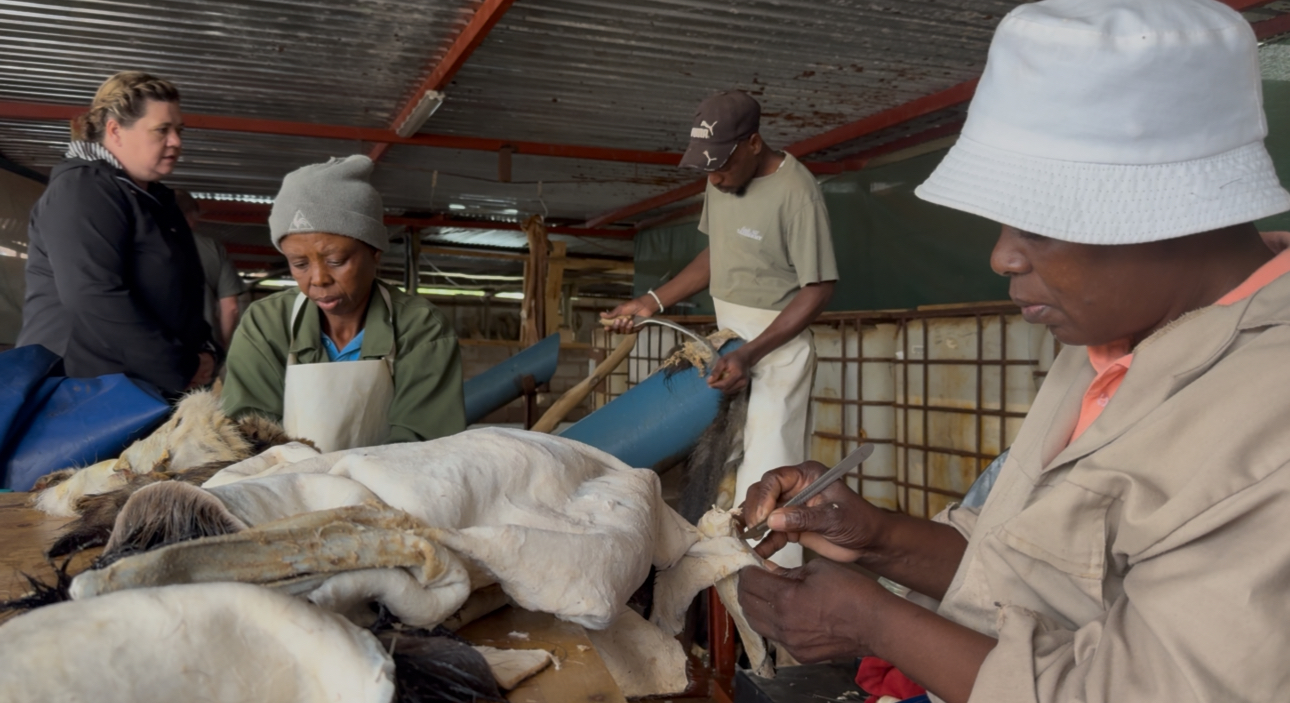
Our visit painted a picture of a wildlife economy that’s evolving: where skilled artisans turn skins, horns, skulls into enduring art; where processors supply game meat to homes, restaurants and hotels; where farms, outfitters, taxidermists, meat processors, exporters, and even children (learning from mounted displays) all form part of an ecosystem.
It’s a world that challenges simplistic ideas of wildlife as either “pristine wilderness” or “endangered species.” Instead, it shows how — if managed with respect, regulation, and purpose — natural resources can sustain livelihoods, build economies, and forge a bridge between conservation and commerce.
For many of those involved — from Melanie Viljoen to Ina Hechter and Pieter Swart — it’s not just business. It’s home. It’s art. It’s the future.
Slider
Zimbabwe pushes youth-centred, rights-based, and community-driven reforms ahead of CITES CoP20
Published
4 weeks agoon
November 20, 2025By
VicFallsLive
BY NOKUTHABA DLAMINI
As the world prepares for the 20th Conference of the Parties (CoP20) to the Convention on International Trade in Endangered Species of Wild Fauna and Flora (CITES), Zimbabwe has outlined a bold and comprehensive policy agenda that shifts global discussions beyond ivory and toward broader issues of sustainable use, human rights, and community empowerment.
In an exclusive interview with VicFallsLive, Dr. Agrippa Sora, board chairman of the Zimbabwe Parks and Wildlife Management Authority (ZimParks), said the country’s proposals are anchored on a simple but transformative message: wildlife conservation must deliver real benefits to the people living with wildlife.
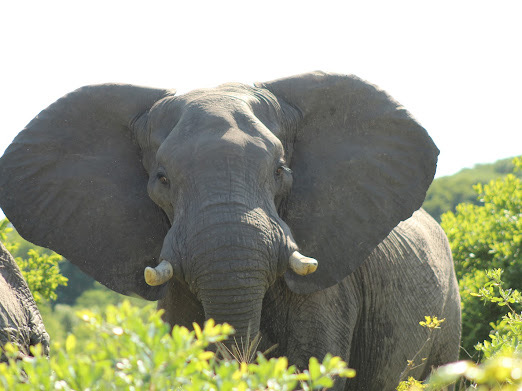 Key proposals Zimbabwe taking to CITES CoP20
Key proposals Zimbabwe taking to CITES CoP20
1. Commercial trade in elephant leather products
Zimbabwe is pushing for approval to engage in regulated commercial trade in elephant leather products. Authorities argue that this form of value addition can bring economic gains to local communities, promote sustainable use, and reduce reliance on donor funding.
2. A formal voice for communities within CITES
Zimbabwe is advocating for the establishment of an Advisory Body or Community Forum within CITES, ensuring that the voices of rural people—who coexist with wildlife—formally shape decisions on international trade, conservation restrictions, and benefit-sharing.
This push echoes one of the founding principles of CITES, which acknowledges that “peoples and States are and should be the best protectors of their own wild fauna and flora.”
3. Recognition of human rights within conservation governance
Zimbabwe’s delegation wants CoP20 to acknowledge the human rights dimensions of conservation—particularly:
- The right to safety for communities facing human–wildlife conflict
- The right to food security
- The right to benefit from natural resources within their landscapes
For Zimbabwe, these rights are inseparable from wildlife management.
Moving beyond ivory: A broader view of sustainable use
Dr. Sora emphasized that Zimbabwe does not want the CoP20 debate to be reduced to ivory.
Zimbabwe argues that without these broader interventions, the conservation model remains unbalanced—protecting wildlife while leaving the people who live among it trapped in poverty
Youth at the centre of the conservation agenda
One of the strongest themes in Zimbabwe’s CoP20 position is youth empowerment, an area Dr. Sora said is now central to national conservation policy.
“Zimbabwe is supporting the Youth Ethnic Conservation Agenda, and we want to continue empowering young people,” Dr. Sora said.
“These are young people who travel long distances between villages and shopping centres, often unaware of wildlife incidents happening around them.”
He revealed that Zimbabwe has approved the establishment of a national chapter of the CITES Rural Youth Network, a platform designed to give young rural citizens a voice in global conservation decision-making.
Dr. Sora said young people—often traveling long distances between villages and service centres—are the first responders to wildlife encounters, yet are rarely included in policy processes.
“Their inclusion is critical for awareness, safety, and community resilience,” he said.
A rights-based approach linked to national priorities
Dr. Sora linked Zimbabwe’s CITES proposals to the country’s National Development Strategy (NDS2), which prioritises poverty eradication.
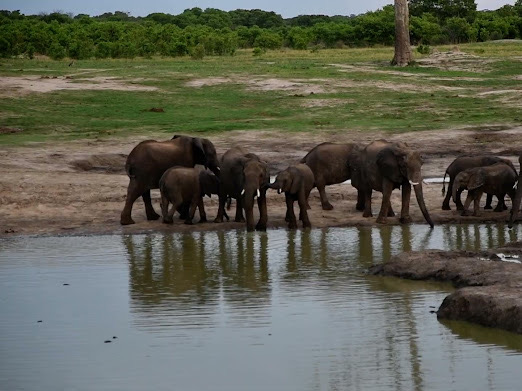
“We want to ensure that communities living within wildlife landscapes receive meaningful support and benefits from the natural resources around them,” he said.
This includes promoting value addition—for example, crafting products from elephant leather—and enabling community enterprises tied to legal wildlife products.
“We are promoting opportunities for value addition so that communities can benefit economically from the wildlife with which they coexist.”
He added that the board is committed to transitioning youth from vulnerability to empowerment, ensuring access to education, business opportunities, and long-term livelihoods.
Unlocking finance through sustainable use
Zimbabwe also plans to push for financial mechanisms—particularly the sustainable use of existing wildlife stockpiles—to support community development.
“Our aim is to secure mechanisms that allow us to reinvest in these communities, strengthening their resilience and ensuring they thrive alongside wildlife.”
Zimbabwe argues that restrictive global trade rules deprive communities of funding that could improve safety, reduce human–wildlife conflict, and support conservation programs.
Zimbabwe’s position rooted in CITES founding principles
Zimbabwe’s proposals, Dr. Sora said, are consistent with the spirit of CITES itself.
The convention’s preamble affirms:
Wild fauna and flora are an irreplaceable part of the earth’s natural systems… Peoples and States are and should be the best protectors of their own wild fauna and flora… International cooperation is essential to prevent over-exploitation…
Zimbabwe believes that empowering communities, recognizing human rights, and enabling sustainable use are simply modern applications of these foundational principles.

Preamble:
As VicFallsLive and its staff, we commit ourselves to the highest standards of independent journalism. We serve the public’s right to know in line with Section 20 of Zimbabwe’s donstitution which guarantees this fundamental right in order to allow citizens to make informed decisions and judgments about their society. We pledge to exercise our role with care and responsibility to safeguard public trust in our integrity.
1. Accuracy & sourcing
Our first duty is to report accurately. We will take care to evaluate information provided to us and to cross-check it as much as possible before publishing. We will show readers the chain of evidence we have.
1.1 The more serious and controversial a claim is, the more corroboration will be required before it can be published. A single source will not usually be sufficient. Secondary sources like other newspaper reports will be treated with caution, and clearly identified.
1.2 Anonymous sources will be avoided unless there is no other way to handle a story and there is extensive additional evidence available. Where sources cannot be named, they will still be identified as closely as possible by reference to their organisation, position, relevance to the story or similar safeguards.
1.3 Anonymity will only be granted if the source can persuade us that they have sound reasons for the request. It is not available to people peddling rumour, comment or spin. However, once it has been granted, the newspaper will protect the identity of the source.
1.4 We will take particular care with information that is passed on to us in furtherance of a particular agenda, and will seek additional corroboration in the light of the motives and interests of a source.
1.5 Plagiarism will not be tolerated.
1.6 Headlines, captions and posters will fairly reflect the content of articles.
1.7 Special care will be taken with details like numbers, dates, names and words from languages other than English.
2. Fairness
We will treat the sources and subjects of our reporting fairly, making sure they have a full opportunity to respond to reporting that may affect them.
This means actively seeking out all relevant views and giving people sufficient time to formulate a response. A report can only go ahead without relevant responses if the opportunity to comment has been declined, or if the editor is satisfied that all reasonable measures have been exhausted. In this case, the situation will be explained to readers.
3. Independence
Our journalistic duty to inform the public trumps all other considerations, whether they are financial, political, personal or any other non-professional interests. This includes the business interests of the platform itself. We will avoid conflicts of interest as well as the appearance of conflicts of interest.
3.1 Editorial material will be kept clearly distinct from advertising or any paid-for content. Any outside support for editorial work, such as through sponsored travel, will be declared in the relevant report.
3.2 Gifts, favours and freebies will be handled in accordance with the platform‘s policy, which is designed to underline that our goodwill cannot be bought through these means.
3.3 Journalists may only take on outside paid work if it does not impact on their primary responsibilities or create a perception of a conflict of interest, and then only with the permission of the editor.
3.4 Journalists will bear in mind that their private activities can impact on their and the platform‘s reputation. This extends to opinions expressed on public or semi-public social networking platforms.
4. Minimising harm
We recognise that the media can have a harmful impact on the subjects of our reports, our sources, our audiences and society in general, and pledge to minimise it. We will take particular care when dealing with vulnerable people and groups.
4.1 We will not fuel racism or racist stereotypes and will not tolerate any form of hate speech. However, we will not shy away from reporting issues involving race.
4.3 We will avoid racial labels unless they are essential to understanding. Similarly, we will avoid other labels that may feed into social prejudices of various kinds, around religion, culture, gender, sexual orientation, HIV status and many others. We will be careful to avoid anything that fuels xenophobia.
4.4 We will take note of social sensitivities around religion, death, the portrayal of nudity, sex and violence, the use of strong language and others. We will not offend these sensitivities gratuitously.
4.5 Any infringement of an individual’s privacy – a right guaranteed by law – must be fully justified by a clear and strong public interest. It must be carefully considered, and proportionate to the level of public interest. We recognise that people in positions of importance or who have sought a life in the public eye have a reduced right to privacy and indeed require greater scrutiny.
4.6 We will take great care to avoid the possibility of direct harm to a source. Where this seems possible, extra steps will be taken to make sure the source understands the dangers and gives informed consent, and steps to mitigate the danger are put in place.
4.7 We will take particular care to avoid harm to children. While it is important to seek out the views of children, we will not do anything that may expose them to abuse, discrimination, retribution, embarrassment or any other risk. We will make sure that we consult with a parent or guardian about any impact our reporting may have on the child. We will not use sexualised images of children.
4.8 We will take great care when publishing pictures of children, the disabled, and people in difficult circumstances.
4.9 We will avoid wherever possible publishing photos of corpses or other gruesome pictures which readers may deem offensive. Publication of such photos will only be done when there is a compelling reason to do so.
5. Reporting methods
We will use open, honest means to gather information. Exceptions can only be made when there is strong public interest in a story and there are no alternative methods available.
5.1 We will identify ourselves as reporters to potential sources. We respect the law, and our reporters are required to have a good understanding of relevant legal provisions.
5.2 We will respect off-the-record and similar arrangements. Agreements with sources must be clear, and are binding on the newspaper and its journalists.
5.3 We do not pay for information.
5.4 We do not allow sources to vet our reports before publication. Sometimes, however, it is advisable for reporters to check back to ensure the accuracy of technically complex information, quotes and the like.
5.5 We will keep detailed records of all interviews we conduct, either in note form or preferably as a recording.
6. Accountability
We accept the same level of public scrutiny and accountability as we subject others to. At all times, responses to complaints will be generous, helpful and governed by the need to make sure readers get the fullest information available.
6.1 We will correct errors with due prominence as soon as we become aware of them. Errors online will not be invisibly corrected. Instead, a note with the correction will be posted with the original article.
6.2 In addition to corrections of factual errors, the platformoffers the following corrective measures:
These measures can be used in conjunction, and are at the editor’s discretion.
6.2 We accept the jurisdiction of the Voluntary Media Council
7. General
7.1 VicFallsLive reviews of artistic work are written fairly, in order to help readers decide what to see and how to understand it. They do not offer an opportunity to degrade or humiliate.
7.2 Columnists and commentators are expected to write fairly and honestly, but this does not suggest a bar on strongly opinionated writing. Fact and opinion will be clearly distinguishable. The platform will seek out a wide range of views, including particularly voices not often heard.
7.3 The platform will encourage readers’ involvement in discussion through the feedback on social media pagesetc. Criticism of the platform and its approach is welcome, but basic standards of decency will be enforced.
7.4 This code applies to all staff. Where there is doubt about how to proceed, journalists must take advice from section heads or the editor.
: Gifts, freebies and outside interests policy
This policy is designed to manage the issue of gifts and freebies, in order to avoid an impression of conflicts of interest impacting on the reputation of VicFallsLive and its staff.
1. Gifts and freebies:
1.1 In general, staff are not allowed to accept gifts with a value of over $20.
1.2 Gifts can include cash, items of value, loans, travel, hospitality or other things. Where they are offered for review purposes, tickets to events, books, computer games or similar are not seen as gifts.
1.3 Where practicable and where it would not cause offence, a gift should be returned promptly and with a polite explanation.
1.4 PR handouts that come into the newsroom or to individual journalists must be handed to the managing editor. From time to time, s/he will organise an auction in the newsroom, and the proceeds will be donated to a charity.
1.5 An offer of funded or subsidised travel or hospitality for an editorial purposes can only be accepted with the permission of the editor, who will decide which reporter will take up the offer. Such offers will only be accepted if there is a legitimate news story to write, which the paper otherwise would not be able to afford to cover. Where such an offer is accepted, a note at the end of the report will explain the situation.
1.6 A staffer may not solicit free or discounted food, drink, gifts or similar benefits on the basis of his or her employment as a journalist.
2. Register of interests:
2.1 The managing editor will be in charge of a register of interests, where all editorial staff are required to declare any outside interests, including but not limited to:
Trending
-

 Slider3 years ago
Slider3 years agoInnscor launches brewery to produce Nyathi beer
-

 National4 years ago
National4 years agoIn perched rural Matabeleland North, renewable energy is vital
-

 Tourism and Environment4 years ago
Tourism and Environment4 years agoStrive Masiyiwa’s daughter opens luxury Victoria Falls lodge
-

 Opinion4 years ago
Opinion4 years agoA street art mural in Zimbabwe exposes a divided society
-

 Special reports4 years ago
Special reports4 years agoTinashe Mugabe’s DNA show’s popularity soars, causes discomfort for some
-

 National4 years ago
National4 years agoVictoria Falls’ pilot dies in helicopter crash
-

 National3 years ago
National3 years agoCommission of inquiry findings fail to be tabled as Victoria Falls councillors fight
-

 National3 years ago
National3 years agoHwange coal miner fires workers over salary dispute
